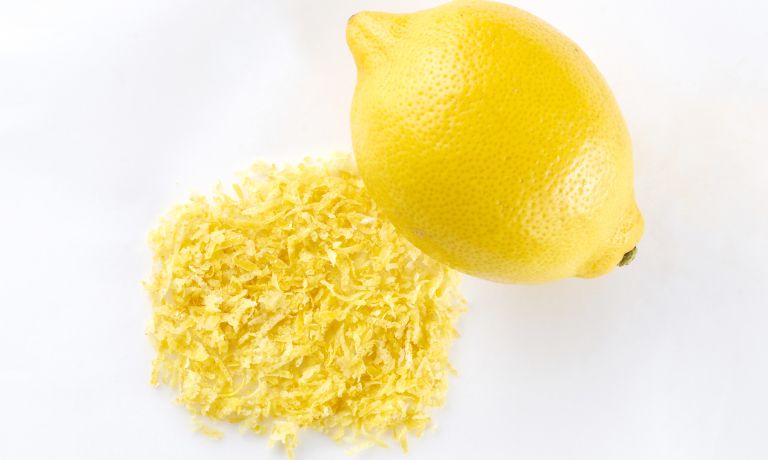Do you love the flavor of orange zest but are looking for a substitute for orange zest that won’t break your budget? Look no further!
Plenty of ways exist to recreate the delicious taste of orange zest without buying a whole-bagged fruit.
This blog post will provide easy-to-implement substitutes that can give any recipe a burst of citrusy goodness!
Read on for our top tips and tricks for adding delightful new flavors to your favorite dishes.
What Is Orange Zest?
Orange zest is the outermost layer of an orange peel that has been finely grated.
An intensely flavorful ingredient can add a bright, citrusy flavor to dishes such as desserts, salads, and sauces.
The oil from the zest also adds an aromatic quality to food.
When using orange zest, it is important only to use the bright orange-colored part of the peel, not the white pith beneath.
Orange zest can be used in various ways, from adding a flavor to baked goods such as cakes and muffins to garnish for cocktails or salads.
The orange zest is also a wonderful addition to chutneys, marmalades, and other preserves.
In some cases, orange zest can even be used as an alternative to traditional sugar in desserts, providing an interesting twist on the flavors of the dish.

Substitutes For Orange Zest
If you don’t have or can’t find orange zest, a variety of other ingredients can be used as an alternative to orange zest.
Grapefruit Zest
Grapefruit zest is the outermost layer of a grapefruit, packed with flavor.
Grapefruit zest has a tart and sour taste that can be used as a substitute for orange zest in recipes calling for citrus.
The flavor profile of grapefruit is similar to oranges.
Grapefruit zest will add a light citrus flavor with a hint of bitterness, providing extra complexity to dishes.
You can use it as a garnish for salads, soups, and desserts or mix it into baked goods like muffins, cakes, and cookies.
When you’re using grapefruit zest instead of orange in a recipe, you may need to adjust the amount of sugar or other sweeteners since grapefruits are less sweet than oranges.

Lime Zest
Lime zest is a form of citrus flavoring made from the thin, outermost layer of a lime’s skin.
This layer contains essential oils and volatile compounds that provide an intense flavor to dishes when it is grated or chopped into small pieces.
Lime zest can be used as an ingredient in marinades, salads, sauces, desserts, and other recipes to provide a distinctive flavor to the dish.
Lime zest can be used as an orange zest substitute due to its similar tartness and citrusy flavor profile.
It also provides a vibrant color that is ideal for dishes such as cakes or cupcakes that need bright colors for decoration.
Furthermore, using lime zest may help reduce the sugar content in a recipe since its flavor is strong enough to provide all the sweetness needed.
Finally, lime zest is much easier to find than orange zest, making it the ideal alternative for recipes that call for orange zest.

Lemon Zest
Lemon zest is the grated outer rind of a lemon, and it can be used to bring a bright citrus flavor to your recipes.
It’s often used as an ingredient in baking or as a garnish on dishes like salads and desserts.
Lemon zest can be a great substitute for orange zest in cooking because many people find its flavor to be tarter and less sweet.
It can also bring a nice, citrusy note to savory dishes like sauces and marinades.
Lemon zest is an easy way to add flavor without adding extra calories or sugar, making it a great choice for healthy eaters!

Clementine Zest
Clementine is a type of mandarin orange. It can be used in cooking to add flavor or provide fragrance.
Clementine zest has a milder and sweeter taste than orange zest.
Additionally, clementine zest has a more subtle flavor than lemon or lime zest, making it better suited for lighter dishes or desserts such as cakes and cookies.
In baking applications, Clementine Zest can add citrus flavor without the tartness associated with lemon or lime zest.
This makes it an excellent addition to cakes, muffins, cookies, and other baked goods.
In savory dishes, Clementine zest can add a bright citrus flavor without the overpowering acidity of lemon or lime zest.
It is perfect for adding a subtle sweetness to marinades, sauces, and other savory dishes.

Orange Extract
Orange extract is a food flavoring derived from the rinds of oranges.
It has an intense orange flavor and aroma and can enhance many dishes and drinks.
Orange extract is often used in baking, as it can add a burst of citrus flavor that may otherwise be missing.
Additionally, since it is so concentrated, small amounts are often enough to flavor larger batches.
Orange extract can also provide a bright, citrusy punch of flavor without adding as much liquid as fresh oranges.
Orange extract is widely available at most grocery stores and can be found in liquid and paste form, depending on the recipe.
It is important to check whether an extract has been pre-sweetened.
When using orange extract as a substitute for fresh zest, it is recommended to start with a small amount and adjust according to taste.
A good rule of thumb when substituting orange extract for zest is to use 1 teaspoon of orange extract for every tablespoon of zest called for in the recipe.
This will allow you to find the right balance between citrus flavor and sweetness.
Orange Juice
Orange juice is a liquid obtained from the pulp of oranges.
It is one of the most popular juices in the world due to its natural sweetness and refreshing taste.
Orange juice can be used for various purposes, such as drinking or cooking or as an ingredient in cocktails.
Orange zest is the grated rind of oranges, and it has a strong, tangy flavor that can be difficult to replicate with other ingredients.
On the other hand, orange juice contains both sugar and acidity that helps bring out the flavor and aroma of dishes like cakes or marinades.
It also has a more mellow flavor than orange zest, which can be beneficial when adding to dishes that require a light, delicate touch.
Additionally, because it is liquid, it is easier to incorporate into a recipe than orange zest.

FAQs
Can You Use Orange Peel Instead Of Zest?
Yes, you can use orange peel instead of zest; however, note that the flavor will not be as concentrated and intense.
The white pith on the inside of an orange peel adds a bitter taste which is why it is usually removed before using the zest.
Can You Use Orange Zest Instead Of Lemon Extract?
Yes, some recipes can use orange zest instead of lemon extract.
However, remember that the flavor will not be exactly the same and will likely be more subtle than if you used lemon extract.
Additionally, if a recipe calls for a specified amount of lemon extract, substituting it with an equivalent amount of orange zest may not yield the same results.
Can You Use Tangerine Zest Instead Of Orange Zest?
Yes, you can use tangerine zest instead of orange zest.
The flavor will be slightly different, but it should still work in a recipe the same way as regular orange zest.
Remember to use less tangerine zest than orange zest since it is more pungent and flavorful.
Conclusion
When looking for an orange zest substitute, many options are available depending on the recipe and flavor profile desired.
Lime zest, lemon zest, clementine zest, orange extract, and even orange juice all provide an intense citrus flavor with a slight sweetness.
When substituting zest for other ingredients, consider the flavor and texture of the final dish as well as the type of recipe in order to find the best substitution.
In addition, be sure to adjust measurements accordingly when substituting these ingredients for orange zest to ensure that the flavors are balanced properly.

